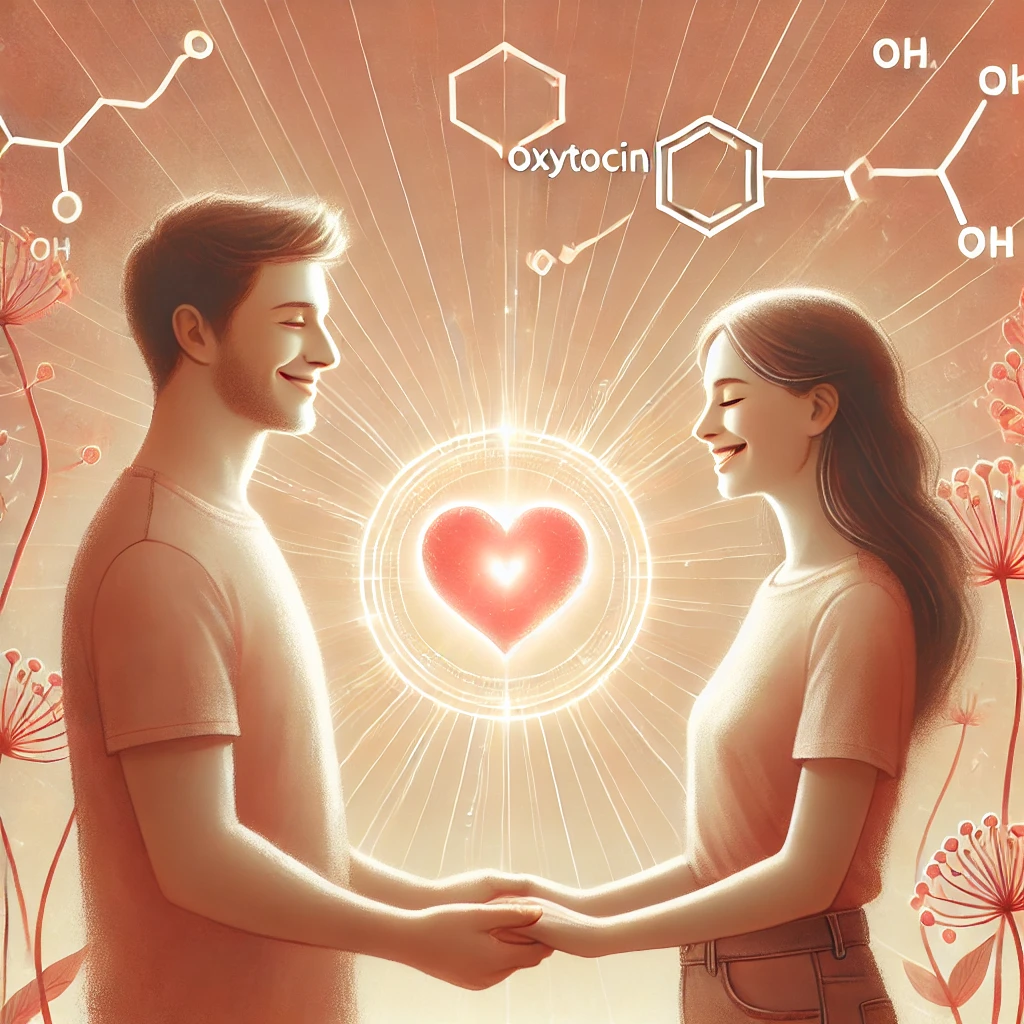
Introduction: Hooking the Reader
Oxytocin is often called the “love hormone,” but what does it actually do? From the flush of new romance to the deep bond between parent and child, oxytocin plays a crucial role in how we connect with others. In this article, we’ll break down what oxytocin is, how it works, and why it might be the secret ingredient behind your closest relationships. You’ll learn the science behind oxytocin, how it influences love and trust, and what current research says about its power in shaping emotional bonds.
1. What Is Oxytocin?
Primary keyword: what is oxytocin
Key Points:
- Definition: a neuropeptide and hormone produced in the hypothalamus.
- How it’s released: during touch, sex, childbirth, breastfeeding, and social bonding.
- Role in the body vs. the brain.
Data/Sources:
- Scientific articles from NIH, Mayo Clinic, or peer-reviewed journals.
- Brief comparison with other hormones like dopamine and serotonin.
2. Oxytocin and Romantic Love
Primary keyword: oxytocin and love
Key Points:
- How oxytocin is released during intimacy and sexual activity.
- Its role in creating feelings of attachment and trust.
- Studies showing increased oxytocin in new couples (e.g., the 2005 Zak study on trust games).
Include:
- Bullet points summarizing behavioral effects in romantic partnerships.
- Cautionary note: oxytocin isn’t a “magic love drug.”
3. Oxytocin and Long-Term Bonding
Keyword: oxytocin and long-term relationships
Key Points:
- Oxytocin’s role in reinforcing pair bonding.
- Animal studies (e.g., monogamous prairie voles) showing long-term effects.
- Influence on relationship satisfaction and conflict resolution.
Data/Sources:
- References to relationship psychology research.
- Stats or quotes from experts in social neuroscience.
4. The Broader Social Role of Oxytocin
Keyword: oxytocin and social bonding
Key Points:
- Released during friendly interactions, group activities, even petting animals.
- Oxytocin and empathy: how it helps us read emotional cues.
- Cultural implications: variation across societies and relationships.
Include:
- Brief list of non-romantic scenarios that trigger oxytocin.
- Discussion on trust-building and group cohesion.
5. Oxytocin in Parenting and Childbirth
Keyword: oxytocin and parenting
Key Points:
- High release during childbirth and breastfeeding to facilitate bonding.
- Promotes maternal behaviors and emotional connection.
- Paternal oxytocin levels and involvement in childcare.
Data/Sources:
- Research from developmental psychology and neurobiology.
6. The Limits and Misconceptions of Oxytocin
Keyword: oxytocin myths
Key Points:
- Oxytocin doesn’t always increase trust—context matters.
- Can enhance in-group favoritism and out-group bias.
- Ethical concerns about synthetic oxytocin use (e.g., nasal sprays for social disorders).
Include:
- Bullet list of common myths vs. reality.
- References to clinical trials or critiques.
7. How to Naturally Boost Oxytocin
Keyword: how to increase oxytocin naturally
Key Points:
- Physical touch (hugs, massages, sex)
- Acts of kindness and generosity
- Meditation, music, bonding with pets
Bullet List:
- 5–7 practical tips for boosting oxytocin
- Mention lifestyle habits with supporting studies where possible
Conclusion: What the “Love Hormone” Really Tells Us
Oxytocin isn’t just about romance—it’s about the deep emotional glue that connects us to others. While it’s no silver bullet, understanding how oxytocin works can help you strengthen your relationships, deepen your emotional intelligence, and better navigate the social world. As science continues to explore this powerful hormone, one thing is clear: love has a lot more chemistry behind it than we thought.



